
Bookshelves do more than hold spines and dust. They divide rooms and echo your design sense without saying a word. Each shelf choice shifts how a space breathes and balances. In a home filled with books, the proper structure gives your walls a reason to stay interesting. Read on to find out what you can do!
Color Coding That Pops On Camera
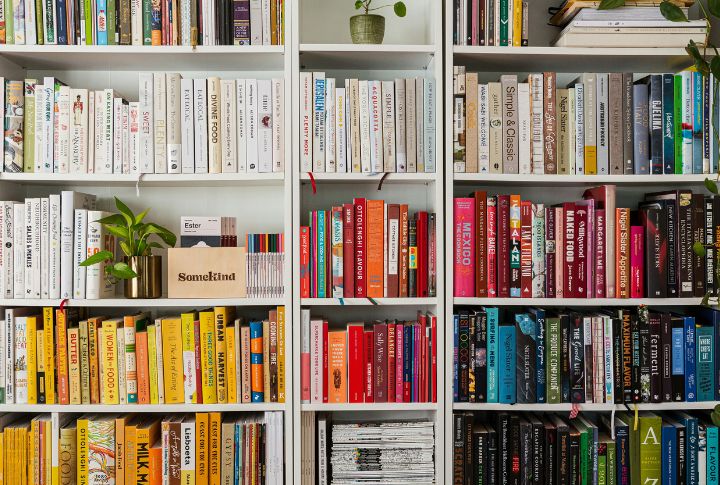
You can arrange books by spine color to create visual order. Begin at one end and build subtle gradients or bold color blocks. The result is a tidy, eye-catching display that feels intentional. It’s a fuss-free system that fits beautifully in both offices and living spaces.
Corner Shelves That Max Out The Margins

Installing shelves is recommended in tight corners where floor space is limited. Choose floating wood panels or metal brackets for vertical display. These shelves store books without blocking furniture or walking paths. You can have them near a doorway or beside a reading chair for easy access.
Floating Shelves With Zero Clutter Vibes

Mount shelves without visible supports for a clean wall design. Adding a bit of space for each shelf evenly avoids stacking too many items on it. Keep book rows short and upright. Add one or two objects beside each group. It is a good method that prevents clutter and works in minimalist interiors.
Dark Woods Paired With Moody Lighting
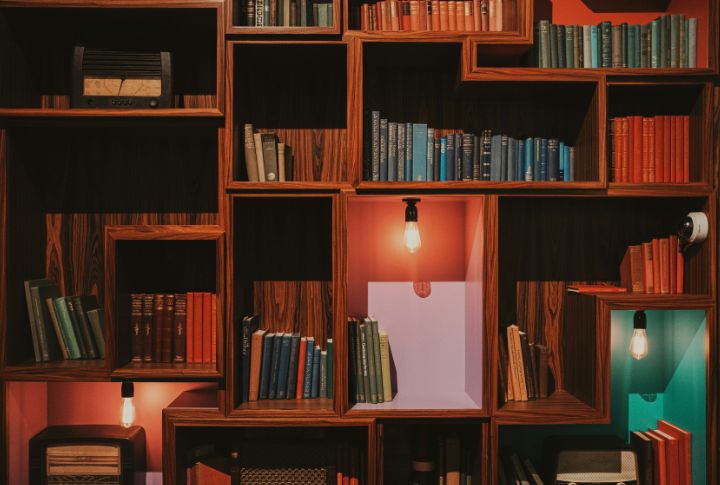
Dark-stained shelves in black walnut or espresso create a sense of depth and drama. Tuck amber or warm white LED strips above or beneath each tier for a subtle glow. The lighting enhances rich textures, while the overall look complements leather seating or deep-toned flooring effortlessly.
Bookshelves That Wrap The Window
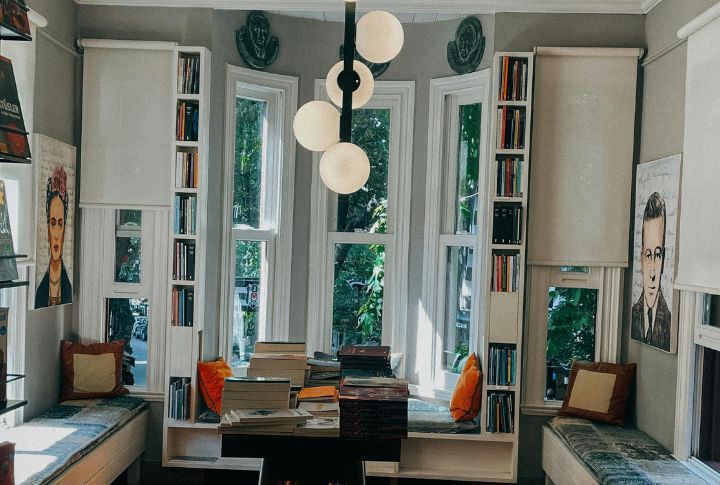
Have you tried symmetrical shelves on both sides of a window frame? With consistent shelf depth and material to match the rest of the wall, this design holds books while framing the view. Add a center bench or desk beneath. It works well in studies or dens.
Maximalist Walls With Vintage Flair
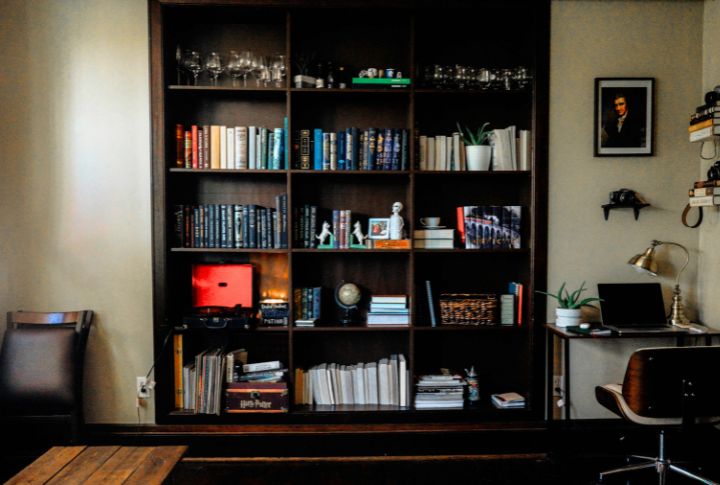
You can fill a full wall with books and framed art to create a layered look. Try mixing vertical stacks with horizontal piles for visual interest. Materials such as brass or dark wood will complement vintage furniture or antique accents.
Glass Fronts That Add Quiet Drama

A dust-free display becomes effortless with glass-door cabinets. Use clear panels to spotlight your book covers, or pick frosted glass for a hint of class and privacy. Glass fronts add a refined touch, especially in formal home offices or sophisticated dining areas.
Industrial Vibes With Exposed Metal

Steel frames paired with wood boards give off a strong industrial feel. It’s a solid choice for modern or converted spaces. The inclusion of pipe brackets or exposed bolts would be great for added detail. Just line up your books tightly to match the shelf’s clean lines.
Low Shelving That Stretches A Room
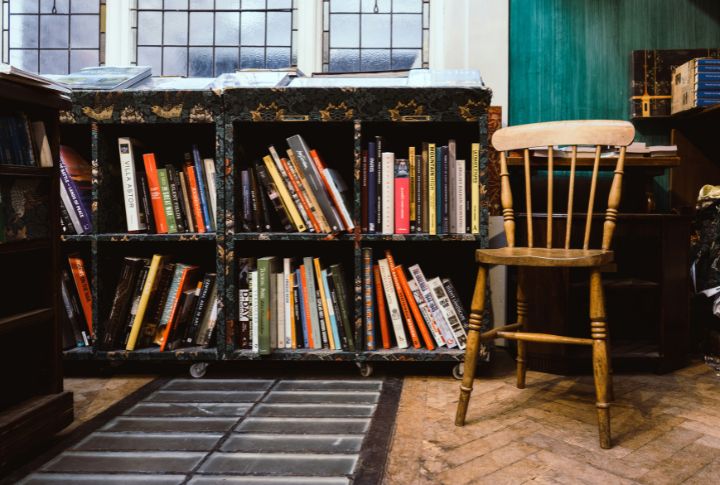
Shelves no taller than a standard chair add function without blocking sightlines. It’s a smart option for hallways or open layouts. You can place them along long walls or under windows. Top the shelves with trays or boxes for loose items.
Painted Shelves That Match The Mood
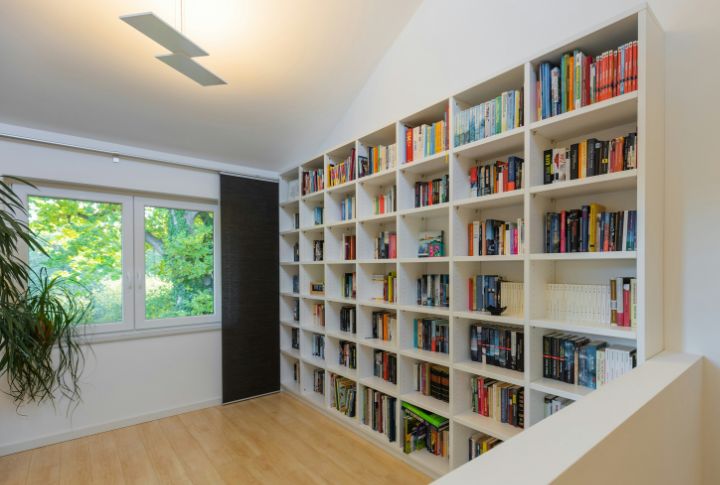
Painting your bookshelves the same color as the wall helps them blend in, making the books stand out. Go for a matte finish to reduce glare. Such color coordinations are ideal for small rooms where a simple design keeps things appealing.
Hidden Nooks Built Behind Doors
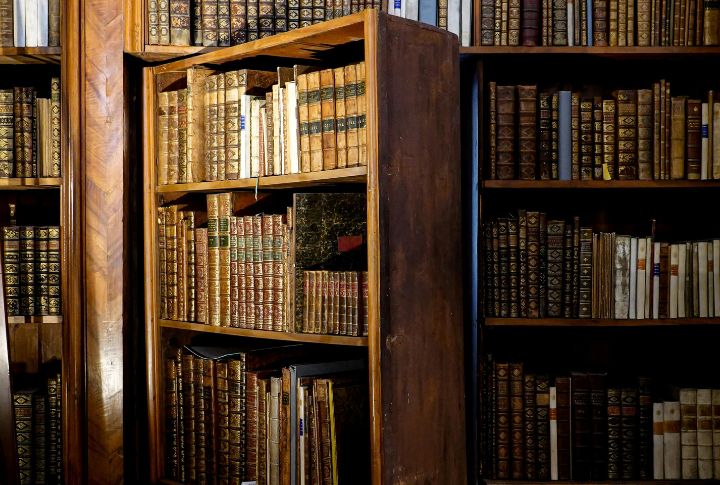
If space is limited, consider installing shelves behind a door for extra storage. A hidden nook can hold books without cluttering the room. People love this mysterious setup, which is mostly suitable for narrow hallways where wall space is limited.
Backless Shelves That Let Walls Breathe
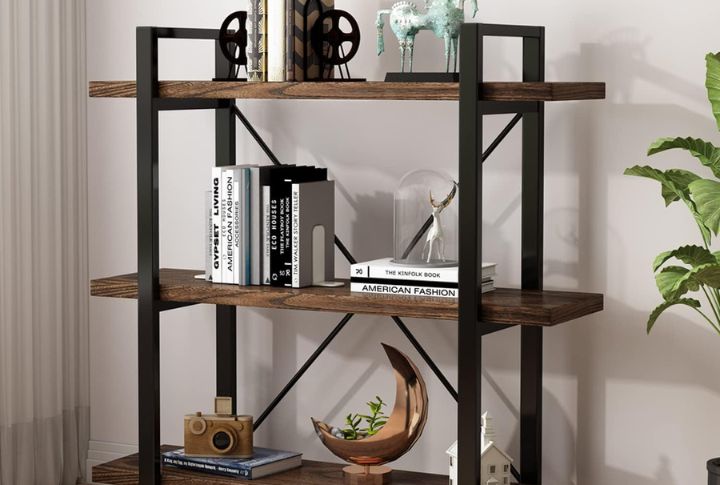
Backless shelving lets your walls take the spotlight. With no backing to block brick, paint, or wallpaper, the design adds depth instead of covering it. The open frame creates dimension, offering style and function without making the space feel heavy or closed-in.
Ladder Shelves That Lean In Style

Ladder-style shelves bring vertical storage to compact areas without overwhelming them. Heavier books can sit on the bottom rungs, while decorative or lighter pieces stay up top. Their airy, tilted frame suits apartments and tight corners where every inch of the wall matters.
Bookshelves That Double As Room Dividers
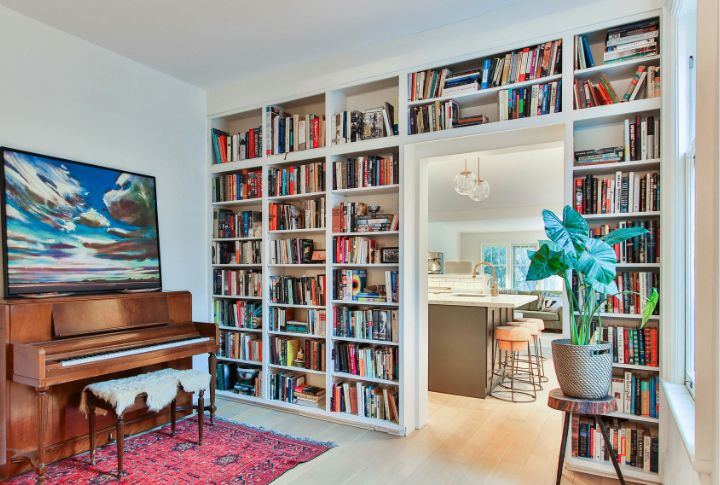
Freestanding shelves can break up a space while still keeping it open and airy. Try placing one between a living area and dining zone. Backless designs allow light to pass through and enable books to be viewed from both sides. It’s especially helpful in open-plan homes.
Arch Cutouts That Add Softness
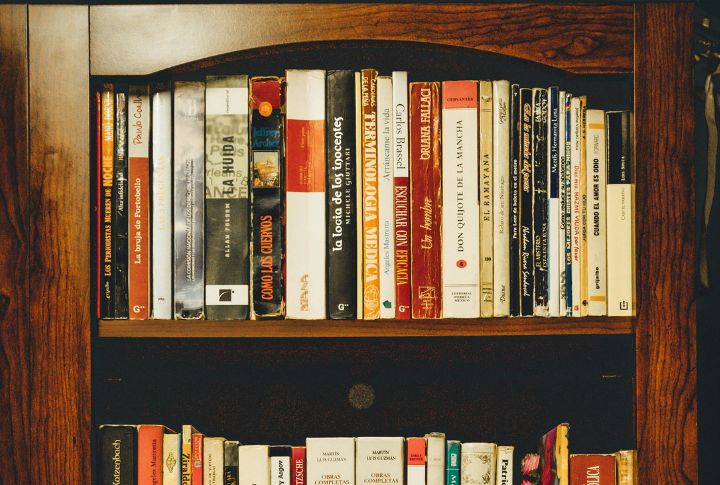
Arched shelves bring a softer shape into a room filled with straight lines. You can install them as built-ins or buy freestanding options with rounded tops. Perfect for entryways or cozy bedrooms, they provide a quiet focal point without overpowering the surrounding decor.
Greenscapes Woven Between Reads
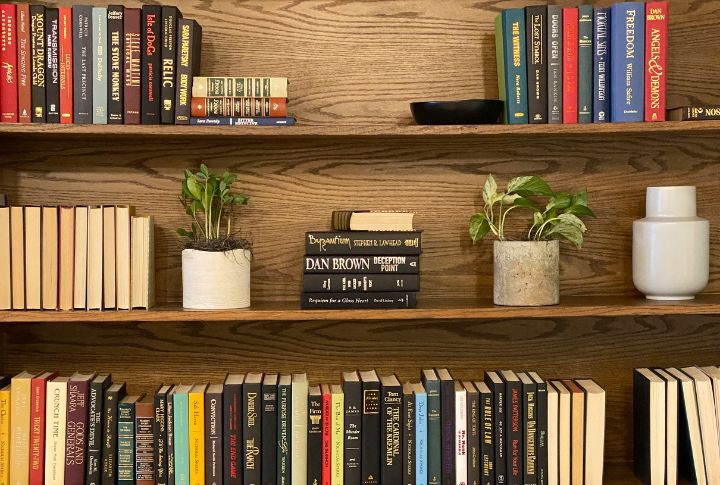
Do you realize that adding plants to your shelves can bring a bit of nature indoors? Try placing small potted plants or trailing vines next to books. Low-maintenance varieties, such as pothos or snake plants, work well. This setup adds color and softens the edges of your book collection.
Statement Shelves With A Graphic Edge

Shelves with bold lines or geometric shapes can serve as a focal point. You can keep decorations minimal to let the design take center stage. It is a great style for rooms with simple walls or furniture where strong shapes have space to shine.
Bookshelves That Follow The Stairs
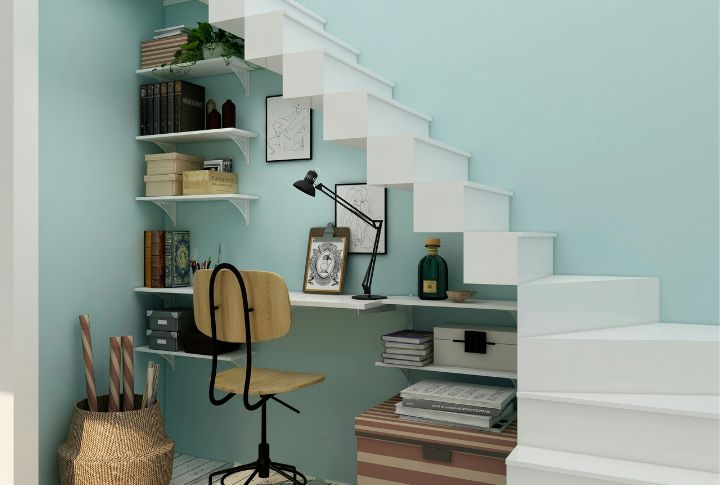
A staircase wall often goes unused, but staggered shelving can turn it into a story-filled incline. Shelves aligned with each step draw the eye upward. Matching wood tones or finishes helps the structure feel built-in. The result can be both functional and architectural.
Mixed Materials That Spark Contrast
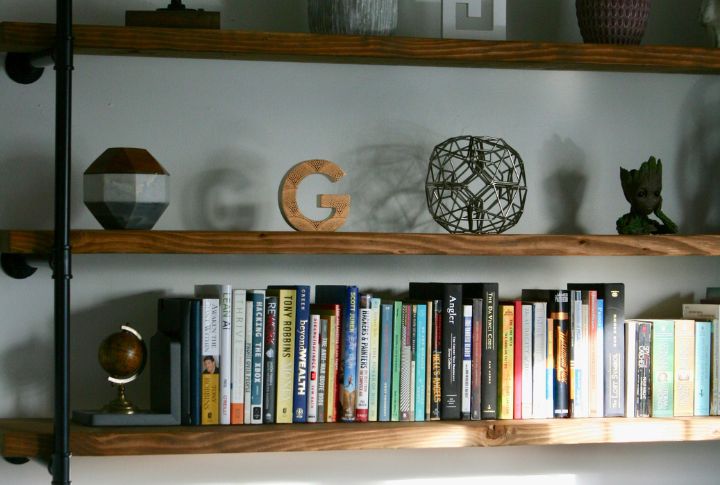
The mix of materials, such as wood or glass, adds texture to your bookshelf. Look for units that combine finishes or build your own using repurposed pieces. Homes with eclectic or industrial styles can use this method to add character with a little library corner.
Personal Collections Styled Like Exhibits

A bookshelf doesn’t always speak of novels alone. Records, cameras, souvenirs, and ephemera, arranged by theme, can be turned into displays. Downlighting or clear risers lift certain pieces into focus. Such a careful arrangement tells more than one story at a time.

